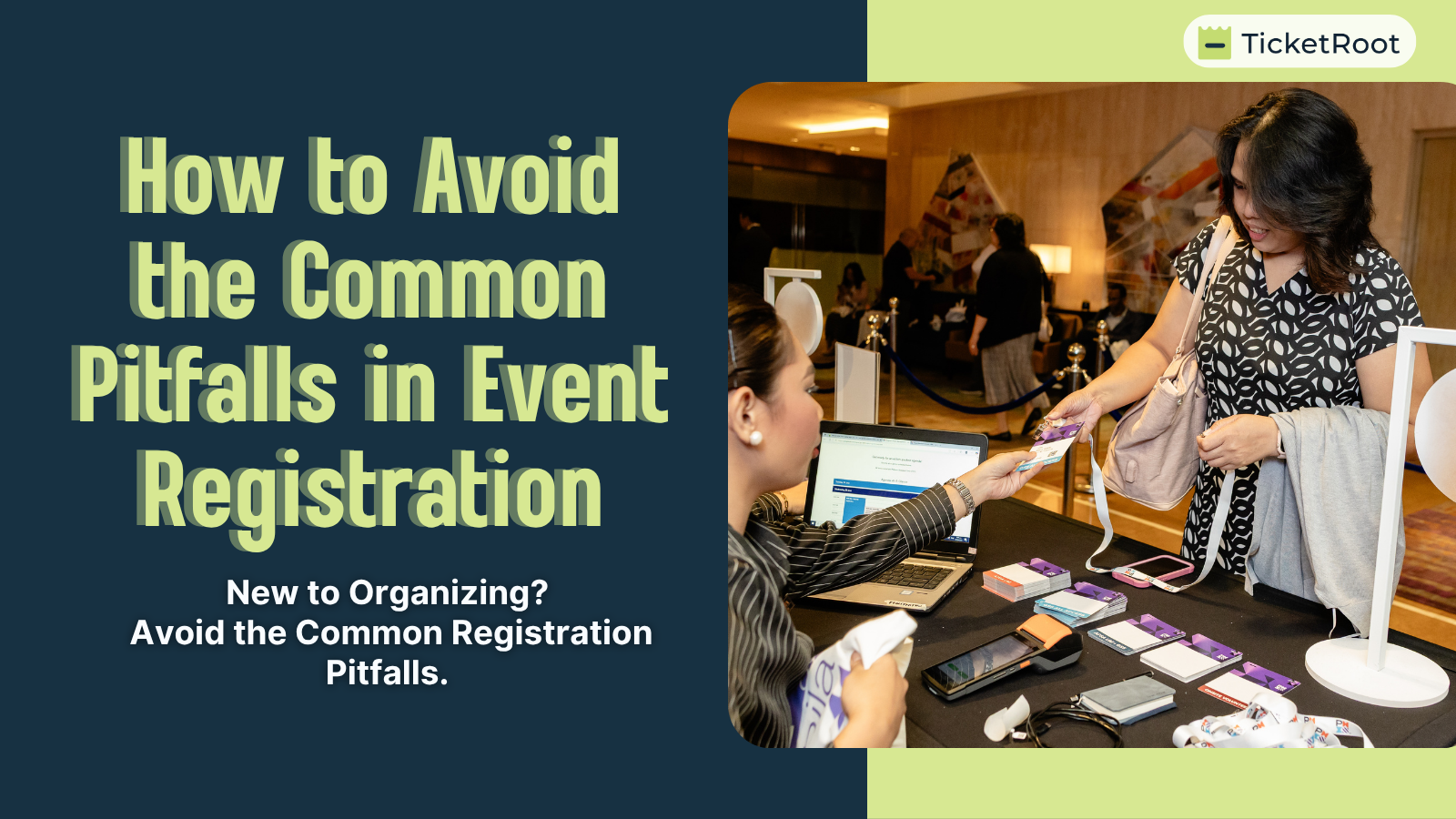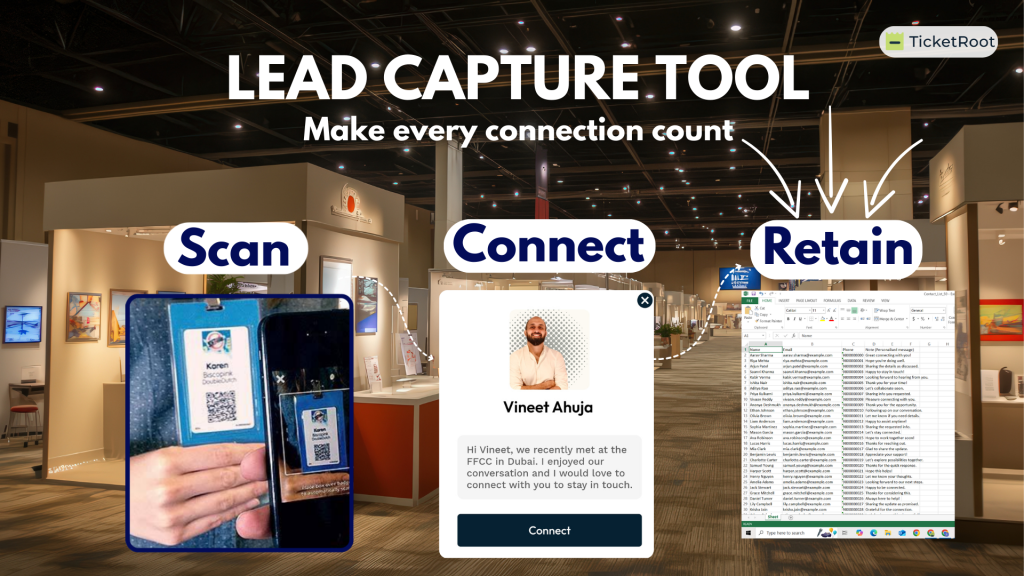When Registration Becomes the First Hurdle
Everything is set: venue, speakers, sponsors, and schedule. Then registration opens—and suddenly, you’re juggling missing details, last-minute changes, and check-in mismatches.
What was supposed to be a smooth start now feels like an obstacle course.
The Quiet Culprits Behind Registration Chaos
Event registration chaos is primarily caused by a cluster of small but persistent problems that lead to significant headaches
The root problem is often fragmentation, where small, disconnected processes multiply under pressure, creating operational drag
- Disconnected Systems: Registration data frequently fails to sync properly with other critical event systems like check-ins, session management, access permissions, and badge printing
- Lack of Flexibility and Adaptability: Without a flexible registration setup, data arrives incomplete, badge printing becomes chaotic, and access control turns messy.
- Over-dependence on tech teams – When every small change requires technical assistance, flexibility vanishes.
One or two of these issues might seem manageable—but stack them together, and they slow down your entire workflow.
Why Flexibility Feels Out of Reach
Different attendee types bring different needs:
- A conference speaker needs fields for session titles and biographies.
- A festival crew member requires zone access assignments.
- A trade show sponsor might need guest seating preferences collected early.
Without a flexible registration setup, data arrives incomplete, badge printing becomes chaotic, and access control turns messy. The focus shifts from running the event to troubleshooting registration.
A Registration Flow That Works With You
An effective registration process doesn’t just collect information—it adapts in real time. A strong setup should:
- Let you adjust forms on the fly without lengthy approvals or technical delays.
- Segment fields by attendee type so each group gets a tailored experience.
- Link data automatically with sessions, zones, or seating.
- Sync updates instantly so check-in and badge information are always correct.
The result? Less scrambling behind the scenes and a smoother start for everyone walking through your doors.
Before Your Next Event…
Take a moment to look back at your last registration process:
- Which fields caused unnecessary confusion?
- Which groups needed more tailored handling?
- Could automation or better segmentation have reduced the workload?
Pro Tip: Start by refining the registration flow for just one attendee group. Even a small, targeted improvement can have a big impact on overall efficiency and attendee satisfaction.
How to Customize the Registration Experience Without Breaking Your Workflow
If you’ve ever managed event registration, you know the real challenge isn’t planning—it’s coordination. Multiple attendee types, last-minute name changes, access updates, vendors, tech teams, and badge printers… it often feels like juggling ten apps and five different teams just to get people in the door.
Registration should be straightforward, but for many organizers, it quickly turns into the first major friction point. Data comes in incomplete, check-ins lag, and last-minute changes ripple across multiple systems.
Why does event registration always feel messy?
Because small, disconnected processes create operational drag that multiplies under pressure.
Why Registration Feels Like a Bottleneck
The root problem is usually fragmentation. One generic registration form can’t serve everyone equally well. Speakers need bios and session info. Crew members need zone assignments. Sponsors need guest lists and seating preferences. Trying to capture all this in a single, rigid form guarantees that something will slip through the cracks.
Then there’s the multi-system juggling act. Registration rarely runs alone—it feeds check-ins, access control, session scanners, badge printing, and sometimes catering. If those systems don’t sync, every small change—a new VIP, a last-minute speaker swap—creates coordination overload for your team.
It’s not the number of changes that breaks registration—it’s that every small update ripples through multiple unconnected steps, multiplying the chance for delay and error.
Organizers Often Think This Is “Just How Events Work”
When registration problems come up, organizers often see them as part of the job. Some think, “I don’t use five disconnected tools—just a spreadsheet, email, and WhatsApp. It’s not that complicated.” Others blame the people rather than the process: “Our team and vendors just make last-minute mistakes.” Smaller events may assume volume is the only issue: “Our event is small, so the number of changes is what really matters.” And many simply accept it as inevitable: “Registration is always a scramble.”
The truth is, all of these situations point to the same underlying issue: fragmentation. Even a small event using just a spreadsheet and WhatsApp is juggling multiple unconnected steps. Every change requires manual coordination. A single speaker update ripples into badge reprints, access list changes, and session adjustments. And manual handoffs multiply human error, even with a careful team.
Events that adopt segmented, synced registration flows break this cycle. They reduce manual interventions by up to 70–80%, eliminate most last-minute surprises, and allow teams to spend their energy on the event itself instead of firefighting.
Start Small, Scale Fast
Many organizers assume that fixing registration means committing to a complex, all‑new system. In reality, the fastest improvements come from starting small. Focus on a single attendee group—like speakers or VIPs—and streamline just their registration flow first.
Once you see cleaner data flowing automatically to check-in, fewer errors reaching the badge desk, and less back‑and‑forth among your team, scaling the same approach to every attendee group becomes effortless. A small, focused change often unlocks the biggest operational relief.
Simplifying a Messy Registration Process
The core issue is fragmentation. Registration, check‑ins, access control, session assignments, and badge printing often live in separate tools or workflows. Each small update—a name correction, a VIP change, or a session swap—multiplies across these disconnected systems, creating delays, duplicated effort, and avoidable errors.
How do I simplify my registration workflow without rebuilding everything?
The answer is real‑time syncing and adaptability. A well‑structured registration flow connects attendee data to every critical step—from check‑ins and session access to badge printing—so that one change updates everywhere instantly. This removes duplicate work, prevents last‑minute chaos, and gives your team the confidence to focus on the event itself instead of chasing data or five different people.
Takeaway for Organizers
Registration is often the first operational challenge an event faces. Simplifying workflows, syncing updates in real time, and tailoring processes for different attendee types can significantly reduce coordination friction.
When these elements come together, registration shifts from being a bottleneck to becoming a smooth, manageable process that sets a positive tone for the event ahead.






